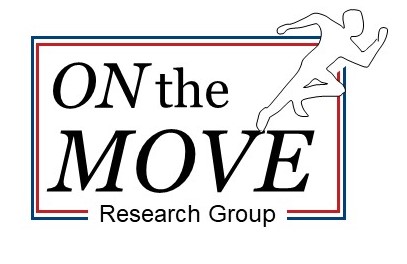Mission, Vision and Goals
Vision
The vision for the OTM research group is to be locally and, with time, nationally, recognized as a unit devoted to research and training in all disciplines related to motor performance utilizing behavioural, biomechanical and physiological methodologies. The group will serve as the hub for a network of researchers and health professionals who focus on the fundamental and applied aspects of motor behaviour across Lakehead University, the local community and Northwest Ontario at large.
Mission
The mission of the group is to identify different motor/physiological constraints that prevent atypically functioning individuals from taking part in physical activities, and/or activities of daily living. Furthermore to devise ways of enhancing their voluntary movement skills (e.g., uni-manual; bimanual coordination; balance; gait/mobility) and abilities (endurance; strength; flexibility) via collaboration with clinical professionals in the community. This can be accomplished by development of innovative protocols and refinement of existing rehabilitation interventions. Also, clinical studies will be geared towards examination of the efficacy of treatments and the determinants of treatment response. The essential component of our mission is reciprocal collaboration with stake-holders within and outside the university.
Specific Goals (Objectives)
- To establish cooperative, mutually beneficial, partnerships among all the stakeholders such as researchers, healthcare providers namely physicians, and rehabilitation specialists including physiotherapists, neurorehabilitation neurologists, and occupational therapists.
- To develop and help implement therapeutic practices that are based on strong conceptual models /framework and that are clinically relevant to enhance everyday life skills and endurance of affected populations
- To support local clinical programs in the area of assessment
- To create programs that aim to restore the lost functioning or develop adaptive skills via innovative technologies
- To provide opportunities, which in addition to supporting pursuit of the research in question, also represent a training platform which will facilitate the expansion of investigators' skills, particularly graduate and undergraduate students from Kinesiology, Health Sciences or NOSM.
- To act as a funding hub, which with time can include large-scale research infrastructure, operation and training grant applications (e.g., CFI – Leading Edge Fund, CIHR-Team Grant, NSERC-CREATE; Heart and Stroke Foundation) and for now smaller seed internal (RRF, SCR) and external grants.
- To focus on funding and training of outstanding young researchers.
Areas of Focus
Motor Control and Learning: Coordination of Uni-manual and Bi-manual Actions
- What features of (kinematic or muscular) synergies suffer and what features remain unchanged due to deficits such as stroke or Parkinson's?
- Do changes in synergies show a proximal to distal gradient similar to the clinical signs in these populations?
- Can rehabilitation restore lost features of synergies or does practice modulate the emergency of new, adaptive synergies?
- What are the best treatments for arm(s) function recovery including visual feedback, virtual reality, bilateral vs. uni-manual training?
Physiology/Exercise Prescription: Optimized Rehabilitation Dose to Enhance Recovery (ORDER) in terms of endurance (aerobic); Strength; Balance; Trunk mobility
- What is the best/most effective way to prevent fatigue?
- What is the optimal way of enhancing the different sub-systems (e.g., combined resistance and strength training)?
- What is the optimal DOSE, amount (intensity) and frequency of exercises?
- Does the use of Nordic-walking have a positive effect on endurance and strength of folks with stroke or other neurological impairment?
Engineering/Technology: Innovative Technologies to Enhance Mobility, Gait, Balance and Trunk Strength in those affected by neurological impairments and/or aging (stroke; MS; Parkinson's)
- Does use of virtual reality (gaming technologies) enhance recovery of motor abilities (endurance; strength) and balance control?
- Does the use of assistive devises (e.g., Cain) help or deter the recovery from stroke or other neurological deficits of upper body?
Telerehabilitation
In February 2013, government announced a $1.3-million national initiative to deliver "telerehabilitation" to the homes of people with stroke or other neurological deficits. Researchers in Nova Scotia, P.E.I., Quebec, Ontario, Manitoba and British Columbia were awarded funds to test innovative ways to provide physical, occupational and speech therapy and lifestyle coaching to people who are recovering at home. The telerehab initiative is a joint effort of Heart & Stroke and the Canadian Partnership for Stroke Recovery. In the context of our region, telerehabilitation can allow individuals in remote areas to benefit from the programs created here in Thunder Bay.

